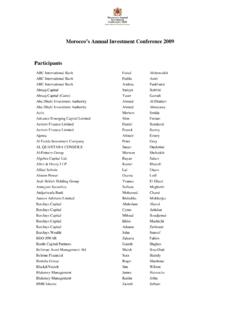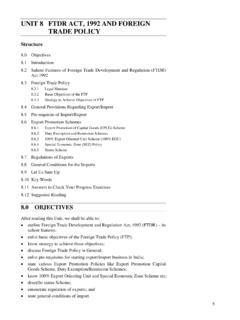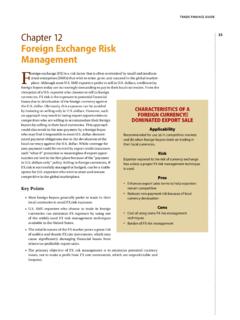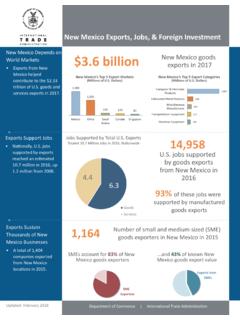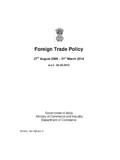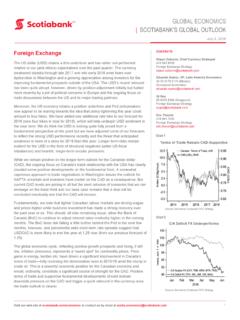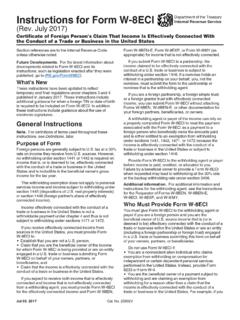Transcription of GUIDE FOR INVESTORS LEGAL FORMS OF COMPANIES, …
1 GUIDE FOR INVESTORS . LEGAL FORMS OF COMPANIES, TAXATION. AND INVESTMENT PROCEDURES. : Some of the information contained in this document may not still be up-to-date I - LEGAL FORMS OF COMPANIES: Whatever the selected criteria adopted, the LEGAL form of the company retained may be changed at any time by amending the Articles of Association of the company. 1 - The public limited company SA (Soci t Anonyme). Basic characteristics of the SA: * a minimum of 5 shareholders is necessary to form a SA (Art 7 of the Law on SA);. * the share capital of a SA cannot be less than 3 million DH if the company seeks public investment, and 3000,000 if it does not (Art 6). * the shares are negotiable and freely transferable;. * all the shareholders are responsible for the company's liabilities up to the value of their capital contribution;. * the company shares are freely transferable and tradable.
2 * the share capital comprises contributions in kind or cash. The nominal value of the stock may not be lower than DH 100;. * the SA is managed by one or more representatives from among the shareholders 2 - The Private limited Company SARL (Soci t Responsabilit Limit e). The SARL has the characteristics of both joint stock companies and partnerships at the same time. Characteristics of the SARL: * 2 partners may constitute a SARL without the intervention of a notary;. * the SARL must be set up a written deed, notarised or under private seal;. * if it comprises 20 partners or less, it is not obligatory to hold general meetings;. * the capital must be at least DH 10,000 divided into company shares of at least DH 50 at least and of equal value. The shares are fully paid up. * The shares of partners are not negotiable. They may be transferred directly and may not be transferred to foreign third parties without the consent of the partners.
3 * The SARL may have a corporate style or business name. 3 - The partnership (Soci t en Nom Collectif). The partnership is an agreement between at least 2 persons with the aim of trading under a corporate name. Characteristics of the partnership are: * the deed of incorporation must be drawn up by a notarial deed or under private seal;. * the partners are jointly and severally responsible for the company shares may only take place directly. 4 - The limited co-partnership (Soci t en Commandite Simple). The limited co-partnership is governed by the same rules as the partnership with the reserve that it is characterised by the existence of two types partners: (1) administrative partner or partners who are responsible for up to the total of their assets, and (2) ordinary partners whose liability only extends to their level of contribution.
4 5 - Joint Ventures The law recognises Joint Ventures for the purpose of one or several commercial operations. Joint Venture agreements are drawn up in the form and for the purpose agreed by the partners, and entail a joint sharing of income. They cannot undertake any legally binding action as they do not have LEGAL status. For the principal administrative formalities relating to the constitution of a company, see Section entitled Investments Procedures . II - LABOUR LAWS. The New labour Law (Code du travail) has entered into force on 7 June 2004. It is the result of several years of debate and negotiations between the Government, the Employers Federation CGEM and the Trade Unions. The new Labour Law is in conformity with the international agreements signed by Morocco and in line with the recommendations of International Labour Organisation (ILO).
5 2. In addition to the modernisation and simplification of the previous texts regulating the labour market, the new Law gives room for more flexibility. Three modes of recruitment are outlined: - Indefinite duration contact (CDI): It is the most common contact and its termination by either party is subject to a notice;. - Finite duration contract (CDD): exceptional and cannot exceed 24 months;. - Temporary work contract (CDT): applicable in seasonal activities and certain traditional sectors as well as in cases of replacement (suspension of a contract for instance) or increase of activity (all sectors). As for Salaries, they are freely negotiated between employers and employees but must not be lower that either the Index-linked minimum guaranteed wage or SMIG (DH /Hour) or the minimum guaranteed wage for those employed in agriculture or SMAG (DH 41,36/ day).
6 All workers must receive a seniority bonus which amounts to 5 per cent of the wage after 2 years service, 10 per cent after 5 years, 15 per cent after 12 years service and 20 per cent after 20 years service, in addition to their wage. After the entry into force of the new Labour Law (June 2004), the working hours may not exceed 44 hours per week or 2 288 hours par annum. Maximum daily working hours are fixed to 10 hours. Beyond 10 hours a day is considered overtime. Any The weekly break must consist of a minimum of 24 consecutive hours for all staff in a company and all workers are entitled to a holiday after six months continuous employment, on the basis of one and a half working days per month of service. All employers must be registered at the Caisse Nationale de Securit Sociale (CNSS) and register its employees and apprentices in this office.
7 Rate of Social Security Contribution From Rate of Contribution Employer's contribution Employee's contribution Family allowances Short-term benefits Long-term benefits The basis for calculating the contributions to cover expenses relating to short-term and long-term benefits is the gross monthly salary of the employee, up to a ceiling of DH 5000. Moroccan legislation recognises the right of workers to form a trade union to protect their professional interests. The monitoring of Moroccan labour laws is carried out by labour inspectors who monitor the application of the social security regulations and working conditions of employees. III - FOREIGN INVESTMENTS. Morocco wishes to encourage foreign INVESTORS and to provide them with the same rights and advantages as local INVESTORS . Foreign direct investment has been permitted in virtually all sectors of the economy since 1990.
8 Investments and investment returns, whether through capital gains, dividends, interest or sales, can be freely repatriated. The objective is to establish an internationally competitive investment environment to increase foreign investment in Morocco. This will take place as a result of the reforms to the Commercial Code, Company Law, the Labour Law and, in particular, by improving the investment laws through the new Investment Charter which came into effect in January 1996. This Investment Charter principally seeks to encourage private sector investment, both domestic and foreign, by offering systematic access to all available benefits as well as by simplifying administrative procedures. This 3. Charter also provides for particular incentives to be offered for large-scale projects. It also provides for the creation of specific agency to assist INVESTORS .
9 The Investment Charter's objective is to encourage investment from INVESTORS . The Investment from INVESTORS . The Investment Charter's objective is to encourage investment from the private sector, both domestic and international, providing automatic access to all the incentives available and simplified administrative procedures. It also contains specific incentives for large projects and makes provisions for the creation of a one-stop investment agency to assist INVESTORS . This chapter summarises the following points: 1- Review of investments to date;. 2- Regulatory framework and investment incentives (Investment Charter);. 3- Investment procedures or Investor circuit; . 4- Opportunities for investment;. 5- Debt for equity conversion schemes;. 6- Promotion of investments and assistance to INVESTORS . Foreign exchange regulations, corporate and personal taxation, customs tariffs and regulations, portfolio investment in the stock exchange and privatisation investments are covered in detail in their separate chapters.
10 REGULATORY FRAMEWORK AND INVESTMENT INCENTIVES: The Investment Charter: On 3 October 1995, the Chamber of Representatives adopted the framework law making up the Investment Charter to replace the nine investment laws in force until that time. This fixes the general framework of investment laws in force until that time. This fixes the general framework of investment in Morocco as well as the policy of incentives for ten years to come. The Charter formulates objectives and proposes the means to attain them, addressing taxation, financial, administrative, LEGAL and property matters. Other acts both legislative and statutory, will come into effect to specify the content and methods of application of this Charter. The merit of the Charter is that it incorporates into a single act all the incentives as well as the provisions aimed at simplifying the administrative procedures for granting benefits the administrative procedures for granting benefits, the widespread application and rationalisation of incentive measures and their automatic attribution to all investments, whatever the sector or their automatic attribution to all investments whatever the sector or their establishment.
